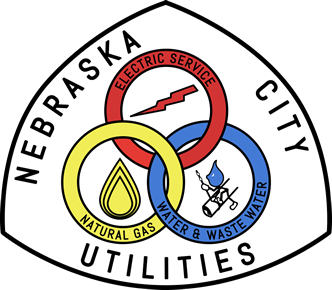 Quality on Tap:
Quality on Tap:
- 2023 Results
- 2022 Results
- 2021 Results
- 2020 Results
- 2019 Results
- 2018 Results
- 2017 Results
- 2016 Results
- 2015 Results
- 2014 Results
- 2013 Results
- 2012 Results
- 2011 Results
- 2010 Results
- 2009 Results
- 2008 Results
- 2007 Results
This report is intended to provide you with important information about your drinking water and the efforts made to provide safe drinking water. For more information regarding this report, contact the Nebraska City Utilities at (402) 873-3353. If you would like to observe the decision-making processes that affect drinking water quality, please attend the regularly scheduled meeting of the Board of Public Works of Nebraska City, Nebraska.
Source of Drinking Water
The sources of drinking water (both tap water and bottled water) include rivers, lakes, streams, ponds, reservoirs, springs, and groundwater wells. As water travels over the surface of the land or through the ground, it dissolves naturally-occurring minerals and, in some cases, radioactive material, and can pick up substances resulting from the presence of animals or from human activity.
The source of drinking water used by the City of Nebraska City water system is Groundwater under the direct influence of surface water. Drinking water is provided by seven wells located North of the Water Plant.
Standby Use Well 561
Standby Use Well 562
Standby Use Well 563
Permanent Use Well 641 A-0010585D
Permanent Use Well 691 A-010585E
Permanent Use Well 811 A-010585F
Permanent Use Well 812 A-01573
Permanent Use Well 8 2000-1 G-121049
Permanent Use Well 9 2000-2 G-121048
Permanent Use Well 10 2010-1 G-157675
Permanent Use Well 11 2010-2 G-157654
All wells located at City of Nebraska City
For more information, please contact the Ground Water Section, NDEQ at (402) 471-0096
Contaminants Found in Drinking Water Drinking water, including bottled water, may reasonably be expected to contain at least small amounts of some contaminants. The presence of contaminants does not necessarily indicate that water poses a health risk. More information can be obtained by calling the EPA=s Safe Drinking Water Hotline at (800) 426-4791.
Contaminants that may be present in source water include:
Microbial contaminants, such as viruses and bacteria, which may come from sewage treatment plants, septic systems, agricultural livestock operations and wildlife. Inorganic contaminants, such as salts and metals, which can be naturally occurring or result from urban storm water runoff, industrial, or domestic wastewater discharges, oil and gas production, mining, or farming. Pesticides and herbicides, which may come from a variety of sources such as agriculture, urban storm water runoff, and residential uses.
Organic chemical contaminants, including synthetic and volatile organic chemicals, which are by-products of industrial processes and petroleum production, and can also come from gas stations, urban storm water runoff, and septic systems.
Radioactive contaminants, which can be naturally-occurring or be the result of oil and gas production and mining activities.
In order to ensure that tap water is safe to drink, EPA prescribes regulations which limit the amount of certain contaminants in water provided by public water systems. FDA regulations establish limits for contaminants in bottled water which must provide the same protection for public health.
Some people may be more vulnerable to contaminants in drinking water than the general population. Immuno-compromised persons such as persons with cancer undergoing chemotherapy, persons who have undergone organ transplants, people with HIV/AIDS or other immune system disorders, some elderly and infants can be particularly at risk from infections. These people should seek advice about drinking water from their health care providers. EPS/CDC guidelines on appropriate means to lessen the risk of infection by Cryptosporidium and other microbial contaminants are available from the Safe Drinking Water Hotline (800-426-4791).
